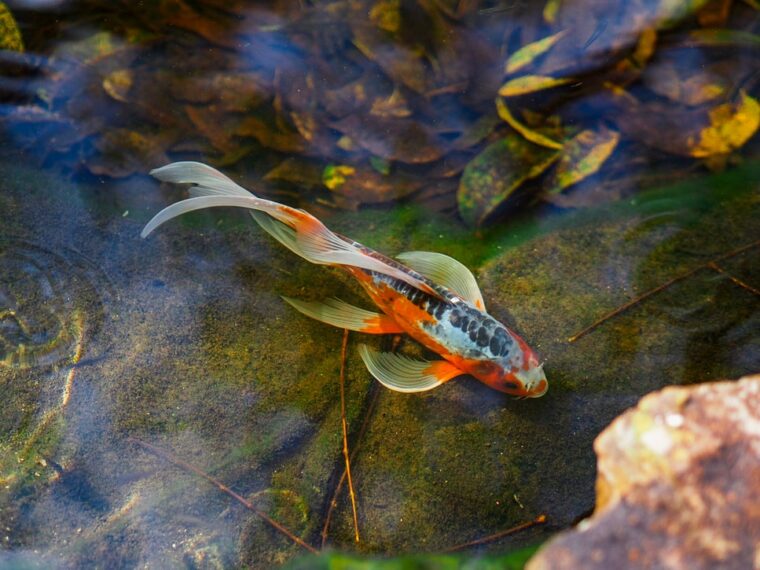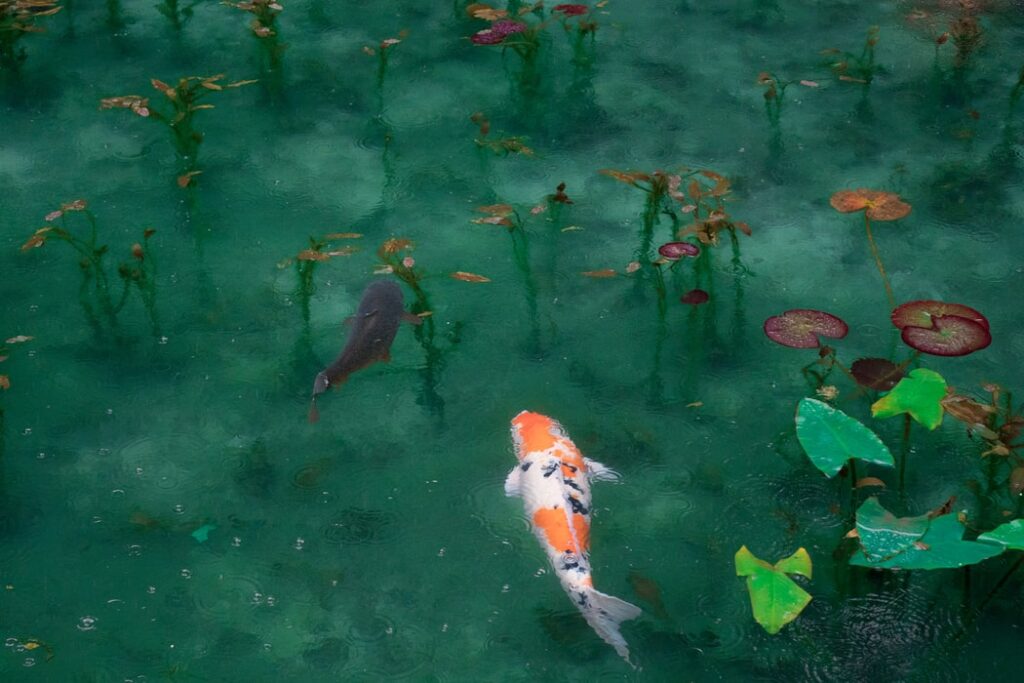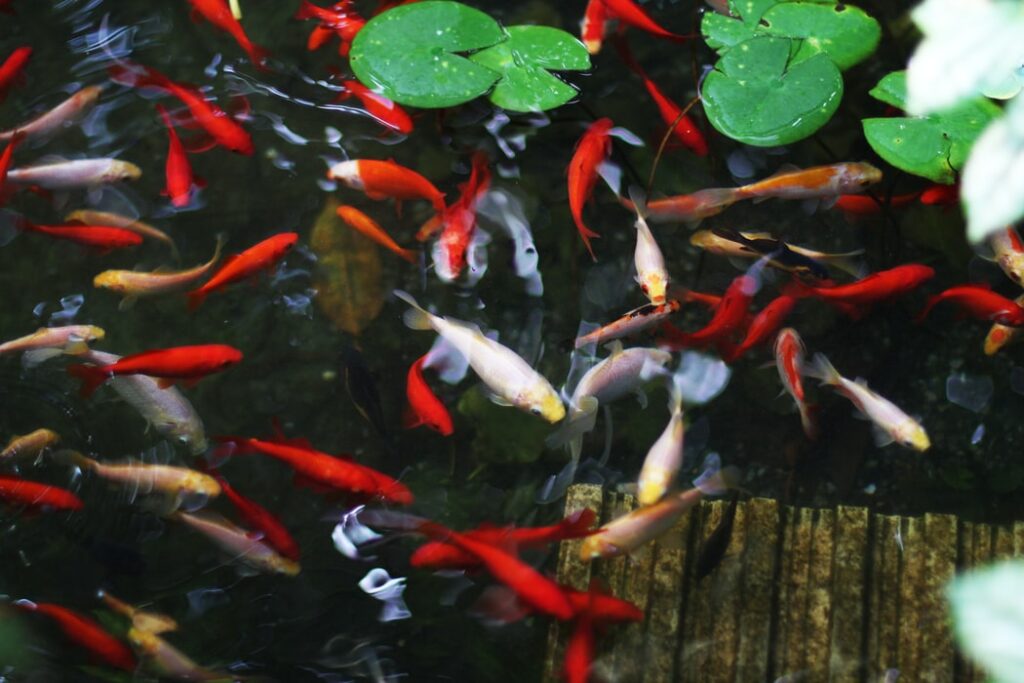Having the ability to relax by a calm, tranquil pond, listening to the trickle of water while visually enjoying the colors of the pond -; this is many homeowner’s dream when it comes to creating a backyard oasis. However, designing, maintaining, and working countless hours to keep the new pond beautiful is usually a nightmare.
The secret to maintenance-free ponds is to develop a healthy and balanced ecosystem that will provide self-care for the feature. The fish and plants play a huge role in this, along with the features and accessories available at livingwateraeration.com.
Ponds are like aquariums when first starting out. They require ongoing care. However, unlike aquariums, it is much easier to receive the care-free ecosystem in larger volumes of water, like a fishpond, than in a smaller tank. Keep reading for some helpful tips for new pond management.

The Cycling Process
The first step to maintaining a pond is to understand the cycling process. It is essential that the water is treated with toxin-neutralizing products. If someone fills their pond with water or tops it off as the water evaporates, it will introduce all types of dangerous chemicals to the water. Chloramine and chlorine are both toxic to fish and not beneficial for aquatic plant life. There is some water that may also contain heavy metals. It is necessary to always treat the new water with a toxin-neutralizing product.
Beneficial Bacteria Considerations
It is important to encourage the growth of beneficial bacteria, which is going to help take care of all types of organic waste. Now that the pond is full of toxin-free, clean water, it is time to get the healthy bacteria growing in the pond and in the filter. Bacteria that are called anaerobic means that it loves oxygen and that it will eat and digest organic waste products and transform them into fertilizers and nitrates for the plants in the pond.
Keep in mind, the pond will have plenty of waste to detoxify. The fish will eliminate in the water and the dead plant material and uneaten fish food will fall to the bottom of the pond and begin to decompose. If this is not turned into beneficial products, then the pond is going to die -; along with everything inside.
There are several products that are full of beneficial bacteria that can be used to help seed the pond, along with enzymes that will help speed up the overall decomposition process. It is necessary to use sludge and enzyme removing products to enhance the pond’s ability to naturally clean.

Avoid Killing the Biological Part of the Filter
Do not destroy the part of the filter where biological matter lives. If this happens, it will kill all the bacteria that have been cultivated. The bacteria will cling to the fixtures, stones, rocks, and other components of the filter media. It requires a larger surface area for the water to pass over and carry the pollutants.
The filter includes a pre-filter pad and traps the biggest debris and particulates, which can be cleaned regularly. The filter also has other materials that the bacteria will grow on. Never clean this part of the tilter unless it is essential, and never clean it using chlorinated water. This will kill the bacteria that a person has worked so hard to grow and establish in the pond.
Feed the New Bacteria
After the bacteria is established in the pond, it needs to be fed. This will help the bacteria live longer and continue doing their job. The best way to feed bacteria is by adding plants and small fish to the water.
The water may appear cloudy at first, which is caused by the ongoing death of bacteria. The bacteria and particulates that cause the water to look cloudy can be removed by adding specialty water clarifiers that are going to clump the clouding molecules to one another, letting them sink to the bottom or to get trapped within the pre-filter. Good bacteria will begin to feed on all the decomposing molecules causing the cloudy water and turn them into more beneficial products.

Test the Water Frequently
During the first few weeks before the bacteria settle to the bottom of the pond, it is necessary to test the water regularly. If there is too much organic decay and not enough bacterial, it can cause higher ammonia levels, which can be extremely toxic to fish. A quality, all-around water test kit to use for aquariums or ponds is needed -; never use a hot tub or swimming pool kit.
Remember, if ammonia levels become too high, they can begin to cause something called ammonia “burn.” This is going to damage the fish’s scales and gills. There are a few products that can be used to help reduce this issue and to help prevent damage to fish because of ammonia build-up. This is an essential maintenance treatment that should be used every time water is added to the pond.
Adjust the pH Levels
It is also necessary to adjust the pH of the water. Fish in a pond are going to thrive in soft, neutral water. The pH of the water should be at seven. A test kit will let the pond owner see what the pH level is. There are a few products available that can be used for adjusting the pH of the water.
It is important to note that fish also require electrolytes. This is especially important if they are under stress when put into a new pond or after waking up from hibernating through the winter. In the spring, add pond salt. If there are water plants in the pond, it may be best to skip the salt because some plants will not thrive with this added to the water.
When it comes to caring for and maintaining a fishpond, there are several factors to consider. Be sure to keep the tips and information here in mind to make the most of the fishpond and to ensure that no serious issues arise.
